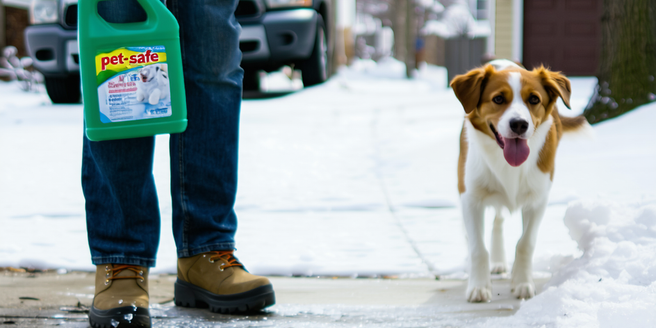
Understanding the Need for Pet-Safe Ice Melters
Winter months bring icy surfaces that can be hazardous for both humans and pets. Traditional ice melters, while effective at reducing slips, often contain chemicals harmful to pets. Pets can ingest these chemicals through paw licking or find them irritating to their skin. Therefore, pet-safe ice melters have become crucial for ensuring the safety and well-being of our pet companions. These products are designed to minimize harmful health effects while still providing effective ice melting capabilities. Awareness of these safer alternatives allows pet owners to protect their furry friends without compromising on safety during the icy months. Understanding the specifics of these pet-safe products can help make informed decisions and highlight their importance in a pet-friendly household, preventing dangerous incidents and promoting responsible pet care.
Common Ingredients in Traditional Ice Melters
Traditional ice melters often contain harsh chemicals like sodium chloride, calcium chloride, and magnesium chloride. While effective at breaking down ice, these ingredients pose various risks to pets. Sodium chloride can cause irritation to paws and is particularly harmful if ingested, leading to issues such as vomiting or diarrhea. Calcium chloride is known for its exothermic reaction, which can burn or irritate pet skin. Magnesium chloride, although less irritating, can cause gastrointestinal distress if consumed in significant amounts. The accumulation of these chemicals in the environment can also harm wildlife and plants. Recognizing these risks is the first step in choosing safer alternatives. Understanding the potential health impacts on pets reinforces the need for awareness and consideration when selecting products for ice management, especially in households with pets.
How Pet-Safe Alternatives Work
Pet-safe ice melters utilize alternative compounds that reduce ice accumulation without compromising pet health. These products often contain carbamide (urea), a less harmful and naturally occurring compound. Unlike their chemical counterparts, urea does not produce heat when interacting with ice, reducing the risk of irritation or burns. Blending urea with other safe ingredients like certain acetates reduces their impact on the paws and stomachs of pets if accidentally ingested. Furthermore, some products add anti-caking agents to keep the ice melter granular and effective without relying on harmful salt compounds. This balance ensures that pet-safe ice melters successfully provide traction and safety during icy conditions, offering a peace of mind that comes from knowing beloved pets are not at risk from traditional ice melter residues.
Top Picks for Pet-Safe Ice Melters
When it comes to selecting pet-safe ice melters, several products stand out for their effectiveness and reduced risk to pets. Products like Safe Paw and Morton Safe-T-Pet are popular choices due to their non-toxic, environmentally friendly compositions. Safe Paw, using a patented dual-effect compound, provides effective melting power while ensuring it is safe for pets, children, and landscaping. Morton Safe-T-Pet, an established name in ice management, contains urea, making it effective without harmful chemicals. Green Gobbler Pet Safe Ice Melt also offers similar assurances with its biodegradable formula. These products are often recommended by veterinarians and pet owners alike, ensuring that winterizing your home’s surroundings doesn’t compromise your pet’s health. By choosing such solutions, you safeguard your pets without sacrificing the efficiency needed to manage winter’s harsh conditions.
Tips for Using Ice Melters Around Pets
Using ice melters around pets requires thoughtful practices to ensure their safety. Always follow the product’s instructions and use only the recommended amounts. After applying the ice melter, monitor your pet closely, wiping their paws with a damp cloth to remove any potential residues that could be ingested. Consider using pet-safe mats or booties to provide an additional layer of protection on walks. Maintain clear pathways to encourage pets to avoid treated areas, reducing direct contact with the product. Store any ice melting products securely, away from pets and children. Encourage pets to use grassy areas when possible, as these are less likely to be treated with chemicals. Regularly checking for any signs of discomfort or irritation can preemptively address any complications, helping ensure a safe winter environment for pets and their owners.
